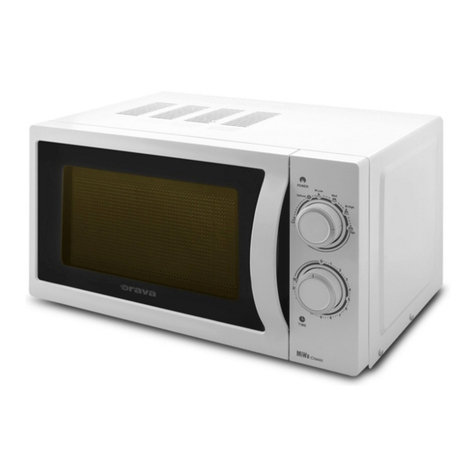
4EN
1.3 Electrical safety
• Before connecting the appliance to the power supply for the first time, make
sure that the voltage on the appliance label corresponds to that of the
household electrical outlet.
• The electric appliance is designed to power from 1 / N / PE ~ 230 V 50 Hz.
• The electrical safety of the appliance is guaranteed only if it is properly
connected to the mains.
• Electrical protection class I equipment is equipped with a protection against
electric shock by means of protective earthing of inanimate parts, which
can become dangerous when the device is malfunctioning. Always connect
such devices to properly installed mains sockets that are equipped with
earthing conductors and have a properly grounded earthing conductor.
All electrical equipment is equipped with a three-wire power supply.
• Class II electrical equipment is protected against electric shock by double
insulation or by enhanced insulation of hazardous live electrical parts.
Device of protection class II it must not be equipped with means to connect
protective earthing.
All electrical equipment is equipped with two-wire power supply.
• Class III electrical equipment is a device that is powered by a small safe
voltage source (battery or accumulator) and does not present any danger
to the user from electrical shock.
• In order to provide increased safety against the risk of electric shock due to
the use of electrical appliances by laypersons, it is recommended to install
the power supply circuit for sockets with a rated current not exceeding 20 A
RCD with a rated operating current not exceeding 30 mA.
To ensure the safety and correctness of the electrical installation, consult a
qualified electrician.
• Only use a power cord with a plug (mains lead) supplied with the device
and compatible with a wall socket. Using another cable may result in fire or
electric shock.
• Always connect an electrical appliance to an easily accessible mains
socket. In the event of an operating fault, the appliance must be switched
off as soon as possible and disconnected from mains supply.
• The power cord and mains plug must always be easily accessible for safe
disconnection of the electrical appliance from the power supply.
• Do not pull off the power cord by pulling the cable. Disconnect the power
cord by pulling the plug behind the power cord plug.
• If you use an extension cord, make sure that the total rated power of all
devices connected to the extension cord does not exceed the max. current
load on the extension cable.
• If you need to use an extension cord or power supply block, make sure that
the extension cord or power pack is plugged into a power socket, and not to
another extension cord or power supply. The extension power cord or power
supply block must be designed for grounded electrical plugs and connected
to a properly grounded electrical socket.
• The power plug of the appliance must be compatible with the mains socket.
Never use any adapters or modify the socket in any other way. Do not use
inappropriate or damaged drawers!
• To avoid electrical shock, plug the power cables into properly grounded






























